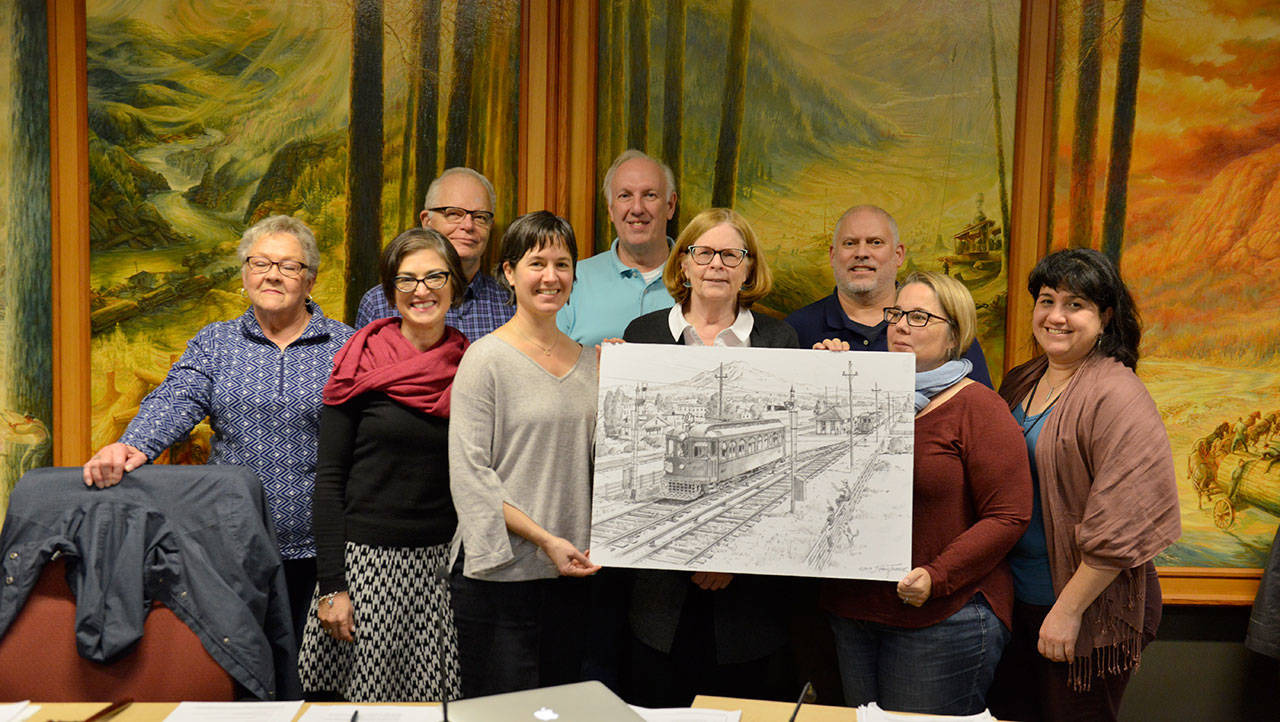One of the Northwest Railway Museum’s newest additions, the 100-year-old electric interurban car 523, became an official King County Landmark last Thursday, Jan. 25.
Car 523 was built in 1907 and began its run between Seattle and Tacoma in 1908. Peggy Barchi, marketing and events manager at the museum, said the car has an important connection not just to the railway history in the state, but also to Snoqualmie.
“This is the last remaining example of the Puget Sound Electric Railway cars, it’s the sole surviving one that’s known to be out there, it’s got a special history,” she said. “For that Puget Sound Electric Railway company, the power was coming out of the Snoqualmie Falls. Even though it didn’t run in this area, it has that local connection.”
The car was donated to the museum in September, 2017, and was transported from Petaluma, Calif., to Snoqualmie last year thanks to an $11,000 grant from King County 4Culture. The landmark commission received recommendations for designation from Historic Preservation Architect Todd Scott from the King County Landmarks Commission, Museum Executive Director Richard Anderson, and Snoqualmie Mayor Matt Larson.
Anderson also discussed the car’s role in the settlement and development of the White River Valley and the Alaska-Yukon-Pacific Exposition in 1909. Anderson also invited artist Craig J. Thorpe who was commissioned to create artwork of the car and presented the pencil sketch of his work-in-progress depicting the car leaving the Auburn Depot in 1915.
The Snoqualmie Landmarks Commission voted to approve the designation of car 523, which will allow the museum to pursue grants for its restoration and preservation in the future. Barchi said the designation will allow them to maintain and preserve the car with hopes of restoring it and possibly putting it back into use.
“We want to make sure we are doing conservation and restoration work on it and possibly in the future there will be a way we can run it,” she said. “We won’t have all the details until we find out about raising the money and learning out what we can do with it.”
For more information on car 523 and the other Northwest Railway Museum projects, visit www.trainmuseum.org and trainmuseum.blogspot.com.


